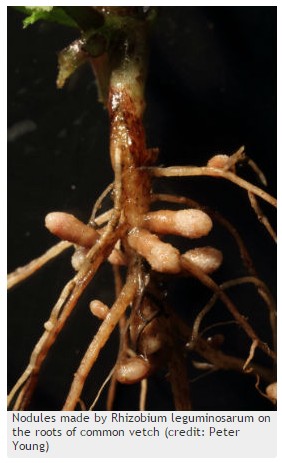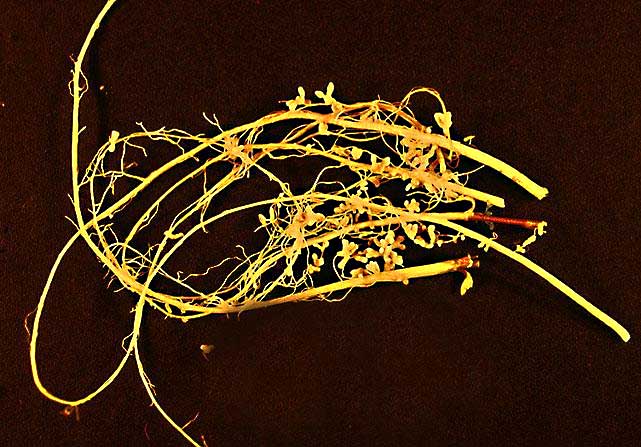Bacteria divide into two identical progeny cells, right? According to Professor Peter Young and his team at the University of York’s Department of Biology, this is only part of the picture. The team recently studied a community of rhizobia from a clod of earth dug up from the university campus, and found that bacterial cells are in fact unique, despite bearing identical core genomes, and that this is due to individual accessory packages carried by the cells.
We can picture the bacterial genome as having two parts, according to Dr. J. Peter W. Young, professor of Molecular Ecology at the University of York and lead author of the study. While all members of a bacterial species carry a very similar core genome, they also carry an accessory package of genes which are not essential to the cell’s operation, but which allow individuals to cope with the special demands of their environments.

“The best known accessory package in rhizobia is the set of genes that enable them to form their symbiosis with plants,” Young told The Speaker. “These ‘sym’ genes include ‘nod’ genes that produce signal molecules that induce the plant to make a nodule and let the bacteria in, and ‘nif’ and ‘fix’ genes that encode the nitrogen-fixation process. These genes usually occur as a cluster in the genome, commonly on a plasmid, which is a separate element that can often be transferred easily.  We looked at rhizobia from two different wild plant species, a clover and a vetch, that the bacteria need very different nod genes to interact with. Hence, all the strains were either clover specialists or vetch specialists. However, bacteria that were very similar in their core genome could have either of these specialisms, because the sym genes have been transferred from strain to strain.
We looked at rhizobia from two different wild plant species, a clover and a vetch, that the bacteria need very different nod genes to interact with. Hence, all the strains were either clover specialists or vetch specialists. However, bacteria that were very similar in their core genome could have either of these specialisms, because the sym genes have been transferred from strain to strain.
“Another set of accessory genes gave the bacteria the ability to grow on gamma-hydroxybutyrate. These genes were also scattered across the population, without regard to the host background and independently of the sym genes. We had a few difficulties with this part of the study because this substance has been used as a date-rape drug and is hard to get hold of legally.”
The team dug in the dirt for their research. They took a square meter of earth from the roadside of the University of York campus and isolated a particular bacterium called Rhizobium leguminosarum.
They then established 72 distinct strains of the bacteria they found in that clump–each had different genes that allowed it to grow on different sources of food. But, Young commented, the potential benefits of the work are not limited to an understanding of bacteria as individuals.
“We studied the complete genomes of 72 bacterial strains–that is a lot of information that can be used to address many questions. Besides the ‘bacteria are individual’ and ‘bacteria transfer functional gene modules’ messages, there are other issues that are important, at least to those who work with bacteria. One of my targets is to improve the way we describe new bacterial species. We have no real idea how many bacterial species there are. Many fewer bacteria have been named than insects, but this is unlikely to reflect reality–it is just a slow business to describe new bacteria. We could now describe bacterial species much more clearly using genome sequences, or at least the core genome sequences.
“The problem is that, for historical reasons, taxonomists insist that there must also be phenotypic differences, that is, observable differences in growth, etc. What we have shown is that this is illogical–almost all these phenotypes are due to accessory genes, and these move about so much that it is impossible to define stable species using them.”
The report, “Bacterial genospecies that are not ecologically coherent: population genomics of Rhizobium leguminosarum,” was completed by Nitin Kumar, Ganesh Lad, Elisa Giuntini, Maria E. Kaye, Piyachat Udomwong, N. Jannah Shamsani, J. Peter W. Young, and Xavier Bailly, and was published in the Royal Society’s journal Open Biology. Technical commentary and updates on the team’s research will is available at the Rhizobium website.
Photos belong to the work of the research team
